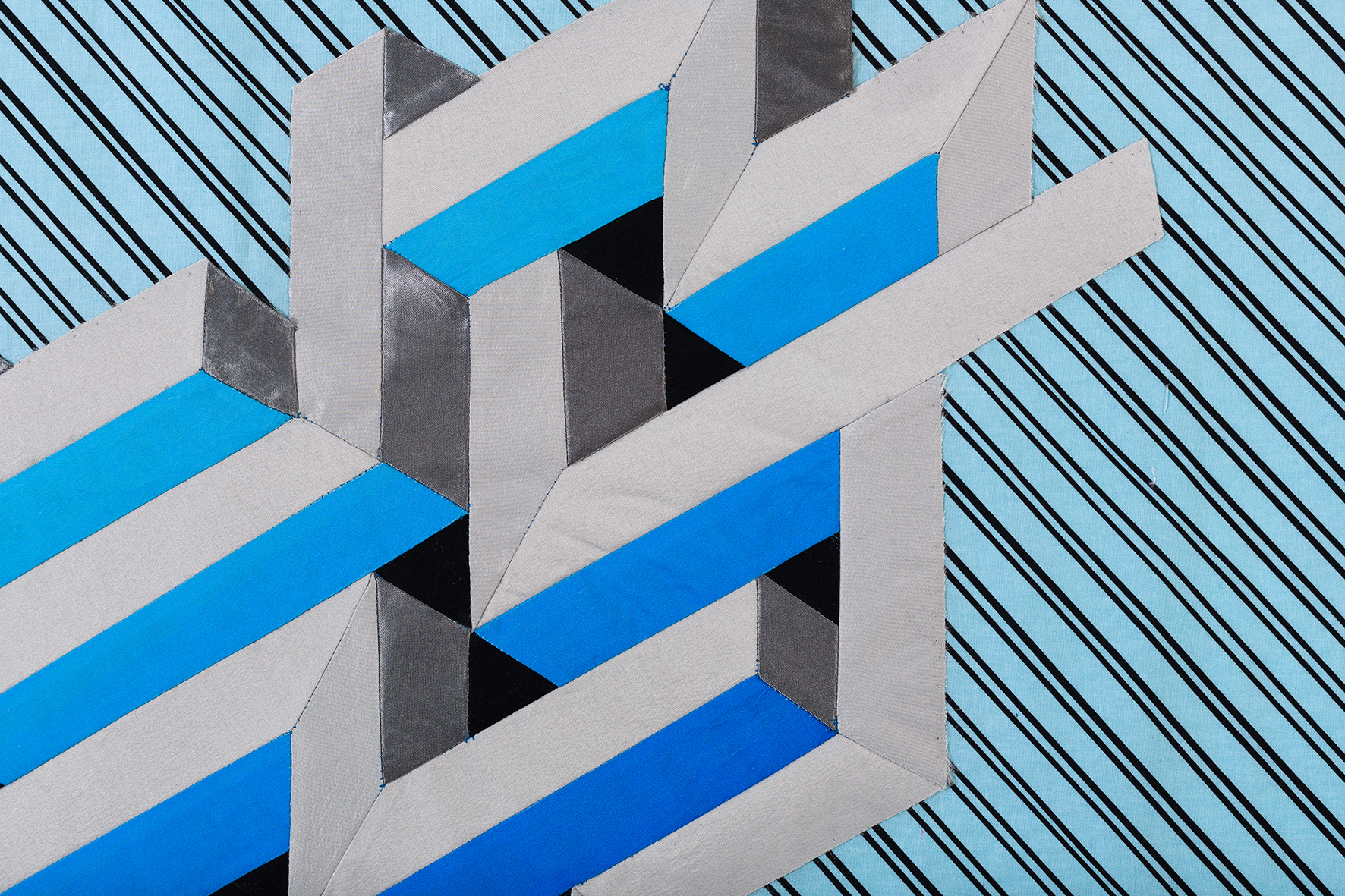
Textile application
93 cm x 100 cm
4T – Four Swedish Stories of Textile
💥 Sueno 339 – Space of Art in Seoul, 22 March – 2 April 2024
Katja Beckman Ojala
Inger Bergström
Takao Momiyama
Jin Sook So
Using textiles as an artistic medium opens up a world of possibilities, interpretations and expectations. How the individual artist works in this realm is unpredictable and can lead to totally different genres and contexts. The exhibition, 4T – Four Swedish Stories of Textile, shows the works of a group of artists who despite their different expressions are united by an interest specifically for textile surfaces. It is in and on these surfaces that the content of the work grows. The artists use carefully honed methods so that the threads and cloths become a ”painterly” tool. The artworks themselves embody the processes and convey the stories of their making.
Katja Beckman Ojala was educated in classical weaving techniques before completing a MFA at Konstfack University of Arts, Crafts and Design in Sweden. It is in weaving that she finds her own artistic language, but she always strives to challenge and expand the limits of the techniques. Nature is an important source of inspiration for her, but it is not her intention to portray or illustrate, rather a question of grasping the emotional status. In the exhibition, Beckman Ojala shows two textile works, in which she explores a technique called kasuri. In this intricate process the warp threads are partially dyed so that the image is revealed when woven. The method is a mathematical process, where she calculates how the colours meet each other in the woven structure.
Mathematical thinking is also an aspect of Inger Bergstrom’s work. She uses patchwork technique to build up a collage-like works that can be associated to traditional textile handicraft as well as to abstract paintings and op-art. A reoccurring interest is the tension between the three dimensional and the two dimensional. Architectural forms and illustrative spaces seem to wonder over the patterned cloth surface. Bergstrom sews together second hand fabrics and the works create a kind of double image. On one hand the fabric’s surface can be thought of as purely formal, the different colours, materials and lustres. On the other hand, the cloths themselves carry histories, contexts and stories.
An interest in the cloth’s history is also evident in the works of Takao Momiyama. He uses rags and cloth pieces found on the markets of his homeland, Japan. With needle and thread, he puts them together one after another. Abstract compositions grow when the old and worn pieces of cloth are assembled. The concept of Mottanai translating roughly to “waste not, want not”, is his main theme. It incorporates his thoughts about the slow sewing process, the life of the fabrics, patching and repairing. “It’s about time, a relationship to the materials I work with emerges. There is a story within the material and a new one is created”, he says.
Jinsook So also uses traditional techniques and pushes them further into a free artistic context. She takes inspiration from Bojagi, the Korean concept of using a cloth to wrap something. The fabric is often produced using patchwork technique, but here it is transformed into a more solid material. In Jinsook´s work, silver net pieces are carefully put together with needle and thread and become a painterly, shimmering surface. Childhood memories of origami have inspired her to work with folded metal mesh. She folds and forms the material under heat to create abstract three-dimensional compositions that build up into reliefs.
with support from

